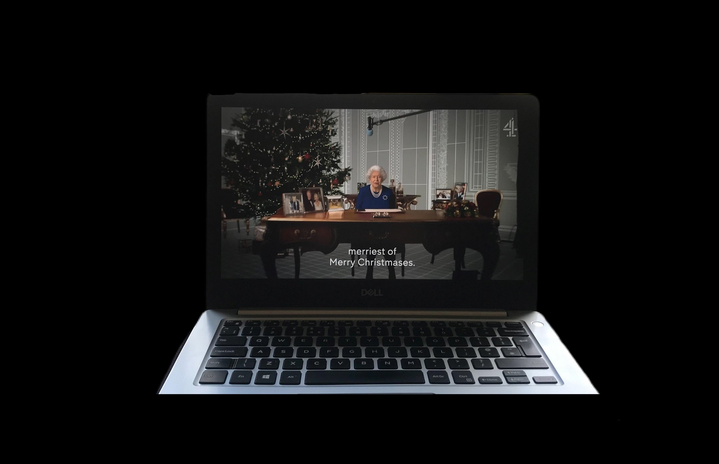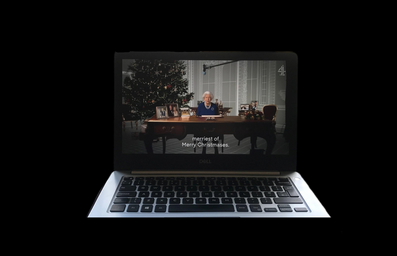The ‘Queen’s’ Speech: Wishing you a very Wary Christmas
Christmas has always been an occasion steeped in tradition, whether that be through decorating Christmas trees, eating mince pies, singing Christmas carols, or of course, the Queen’s annual Christmas Speech, which has occurred for the past 68 years. This year we were lucky enough to have two speeches – although one took on a remarkably different form.
Channel 4 saw this event as an opportunity to hammer home the dangers that technology poses to the modern world through the spread of misinformation. This is a topic that has grown in significance massively with the rise of social media and something I looked at in another of my articles, which can be found here. The channel created a synthetic version of the Queen in order to deliver what director William Bartlett has described as a “truly alternative Queen’s speech”.
Channel 4 certainly adopted a dark humour approach to the speech with a number of cutting jibes. The speech opens with a criticism of the BBC’s control of the Queen’s freedom of speech and she delights in having the opportunity “to say whatever [she] likes”. The ‘Queen’ makes a scathing review of Harry and Meghan’s decision to leave England in favour of Canada. Prince Andrew’s relationship with Jeffrey Epstein is touched on, while the birth of Boris Johnson’s sixth (?) child makes for an additional punch line. Discussion of these topics is, of course, unusual to the Queen’s annual speech. However, if there were any who were still fooled by the Deepfake guise, ‘Queenie’ then puts us through our paces with a popular TikTok dance, complete with explosions of confetti and a very excited Corgi, no doubt a common occurrence at Buckingham Palace.
The ‘Queen’ tells us that the theme of her speech is trust, a deliberately ironic one considering the medium in which it is being discussed. Towards the end of the speech the ‘Queen’ takes out her smartphone and discusses how in the modern world so much of our lives are experienced virtually, forcing us to question “if what we see and hear is always what it seems”. The ‘Queen’ then bids us farewell and wishes us a Merry Christmas, while the digital veil begins to glitch around her revealing the set and actress, Debra Stephenson, in an impressively chilling manner.
Along with the speech, Channel 4 also made a video documenting the process of making the speech and the purpose behind it. The reaction of those involved highlights the controversy that technological advancements pose. James Hatcher, the producer, stated “we all have concerns about where technology is taking us” and the speech was an attempt to comment on that in some small way. William Bartlett warned that this kind of misinformation is something we need to be concerned about, “there is a lot more fake news around generally and I think it is easy to convince people of these sorts of things”. When discussing the technology used to make the video, Bartlett states, “the actual fundamental technology of replacing someone’s face is more easy than many would think”, thus further emphasising how dangerous Deepfake technology could become in the wrong hands.
Contrastingly, Debra Stephenson describes how she found the whole Deepfake experience “magical” and would jump at the chance to work with the technology again. She states, “I think we’ll be seeing a lot more of that when it comes to comedy impressions”. Sentiments of this nature suggest that Deepfake and other imitative technology are not going away. Sam Gregory, a program director at WITNESS, reacted to the video by tweeting that an exaggerated focus on Deepfakes “over-values hypothetical threats”. However, perhaps what Channel 4 have succeeded in doing is embracing a new form of technology, highlighting its controversies and “potential for destruction”, but also exhibiting its strengths as a medium for comedy.
Hatcher and Bartlett both discussed how the speech was not intended to be “mean-spirited” and how they wanted it to be fun and entertaining whilst still putting across what is “actually quite a serious message”. The public, however, did not seem to agree with this sentiment. Ofcom received over 200 complaints, with viewers such as Penny Juror taking to social media, criticising the video for its “cheap jokes” and “poor taste”. Many felt it was making light of situations that were no doubt painful for the royal family, especially in a year that has been so hard for so many of us. Ofcom have confirmed that they are now consulting the Broadcasting Code to decide whether formal action is required.
As with all comedy, there is always room for offense and people are, of course, entitled to their opinions. However, I think it is especially important with this video that people do not lose sight of the purpose. The Royal Family are no doubt used to mocking tabloid articles that serve no purpose other than to make money. Perhaps the urgency of this issue lends itself to a slightly more forgiving audience? Maybe Ofcom’s resources would be more usefully directed towards ensuring that technology, such as Deepfake, does not lead to a further spread of misinformation that causes real damage, as opposed to this, arguably, superficial irritation.
Once again we find ourselves toeing the ever more blurred lines between right and wrong, with technology posing the eternally present conundrum of advancement vs. danger.



